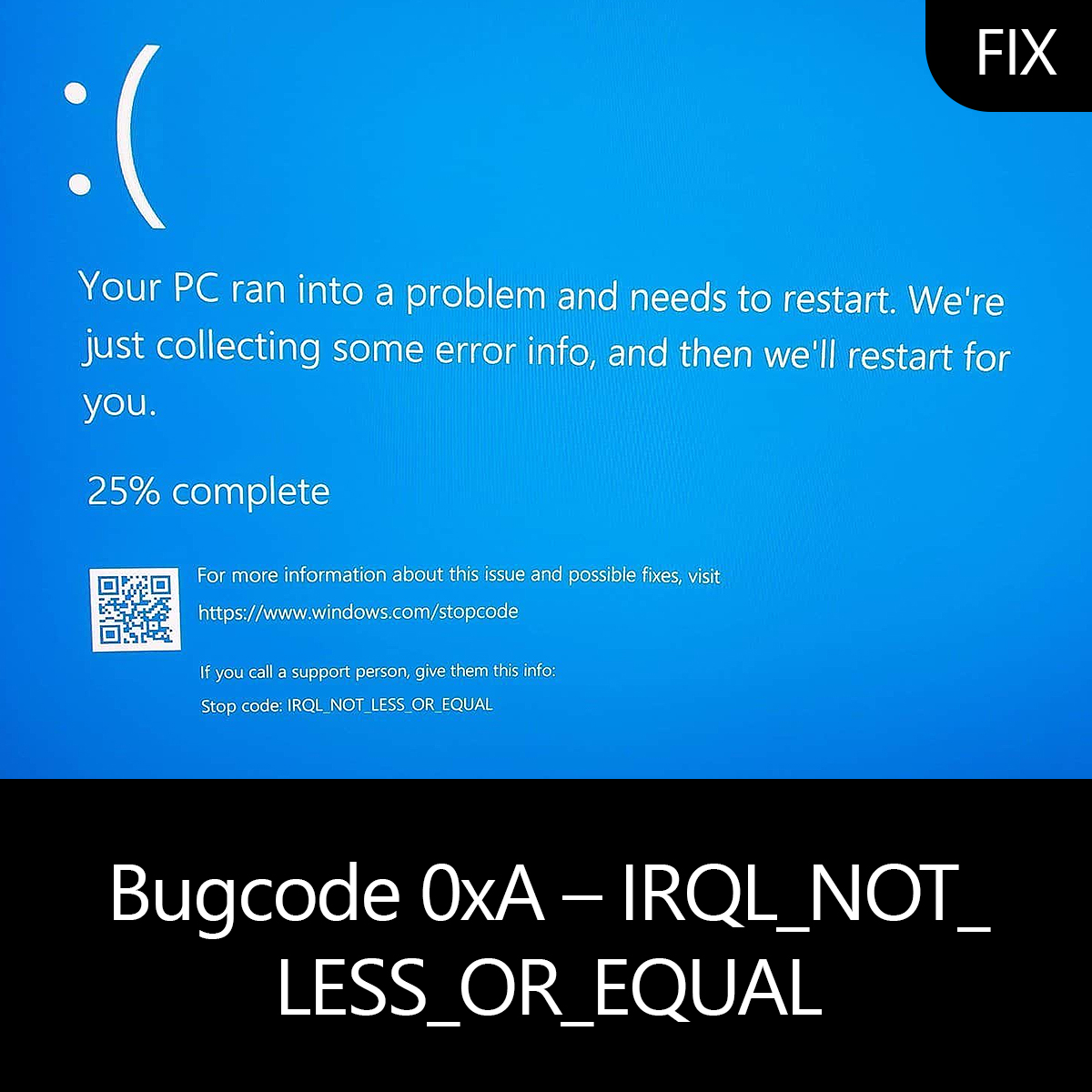

- #Your pc ran into a problem stop code irql not less or equal drivers#
- #Your pc ran into a problem stop code irql not less or equal driver#
- #Your pc ran into a problem stop code irql not less or equal windows#
For more information, see Driver Verifier.įollowing is a debugging example: kd>.
#Your pc ran into a problem stop code irql not less or equal drivers#
The code that verifies drivers adds overhead as it runs, so try to verify the smallest number of drivers as possible. You can configure which drivers to verify. To start Driver Verifier Manager, type verifier at a command prompt.
#Your pc ran into a problem stop code irql not less or equal windows#
Driver Verifier Manager is built into Windows and is available on all Windows PCs. If it identifies errors in the execution of driver code, it proactively creates an exception to allow that part of the driver code to be further scrutinized. For example, Driver Verifier checks the use of memory resources, such as memory pools. Driver Verifierĭriver Verifier is a tool that runs in real time to examine the behavior of drivers. Look for critical errors in the system log that occurred in the same time window as the blue screen. Gather InformationĮxamine the name of the driver if that was listed on the blue screen.Ĭheck the System Log in Event Viewer for additional error messages that might help pinpoint the device or driver that is causing the error. (The !analyze extension can be helpful in determining the root cause.) Next, enter one of the k* (display stack backtrace) commands to view the call stack. Start by running the !analyze debugger extension to display information about the bug check. If a kernel debugger is available, obtain a stack trace. Investigate the validity of parameter 1 with !pte, !address, and ln (list nearest symbols). Otherwise, this may be a bad pointer, possibly caused by use-after-free or bit-flipping. Run at a lower IRQL, or do not mark the code as pageable. If parameter 3 indicates that this was an attempt to execute pageable code, then the IRQL is too high to call this function. Run at a lower IRQL, or allocate the data in the nonpaged pool. If !pool reports that parameter 1 is paged pool (or other types of pageable memory), then the IRQL is too high to access this data.

If parameter 1 is less than 0x1000, the issue is likely a NULL pointer dereference. This is either a bad memory pointer or a pageability problem with the device driver code.įollowing are some general guidelines that you can use to categorize the type of coding error that caused the bug check:

This bug check indicates that an attempt was made to access an invalid address while at a raised interrupt request level (IRQL). This bug check is usually caused by kernel-mode device drivers that use improper addresses. Use the ln (list nearest symbols) command on this address to see the name of the function.

The instruction pointer at the time of the fault. Marking code as pageable when it must be non-pageable (for example, because the code acquires a spinlock, or is called in a deferred procedure call).Calling a function that cannot be called at DISPATCH_LEVEL while at DISPATCH_LEVEL.Note that bit 3 is only available on chipsets that support this level of reporting.Ġx0 - Fault trying to READ from the address in parameter 1.Ġx1 - Fault trying to WRITE to the address in parameter 1.Ġx8 - Fault trying to EXECUTE code from the address in parameter 1. These commands, may also be useful in gathering information about the failure: !pte, !address, and ln (list nearest symbols).Ģ: The IRQL was DISPATCH_LEVEL at the time of the fault.īit field that describes the operation that caused the fault. Use !pool on this address to see whether it's The virtual memory address that could not be accessed. IRQL_NOT_LESS_OR_EQUAL parameters Parameter If you are a customer who has received a blue screen error code while using your computer, see Troubleshoot blue screen errors.


 0 kommentar(er)
0 kommentar(er)
